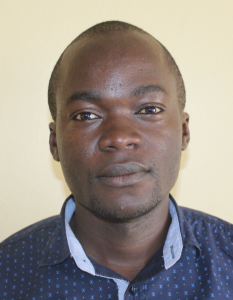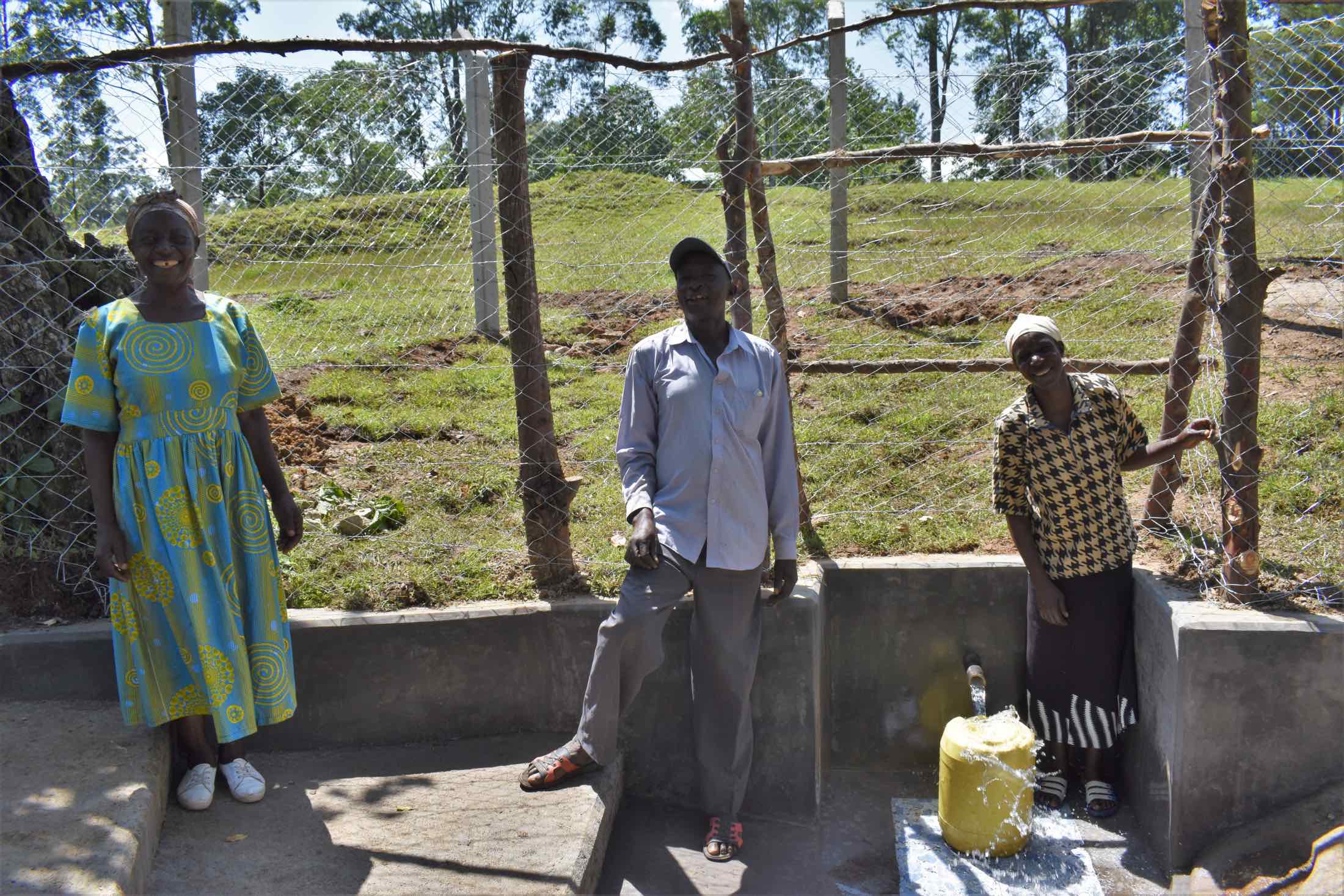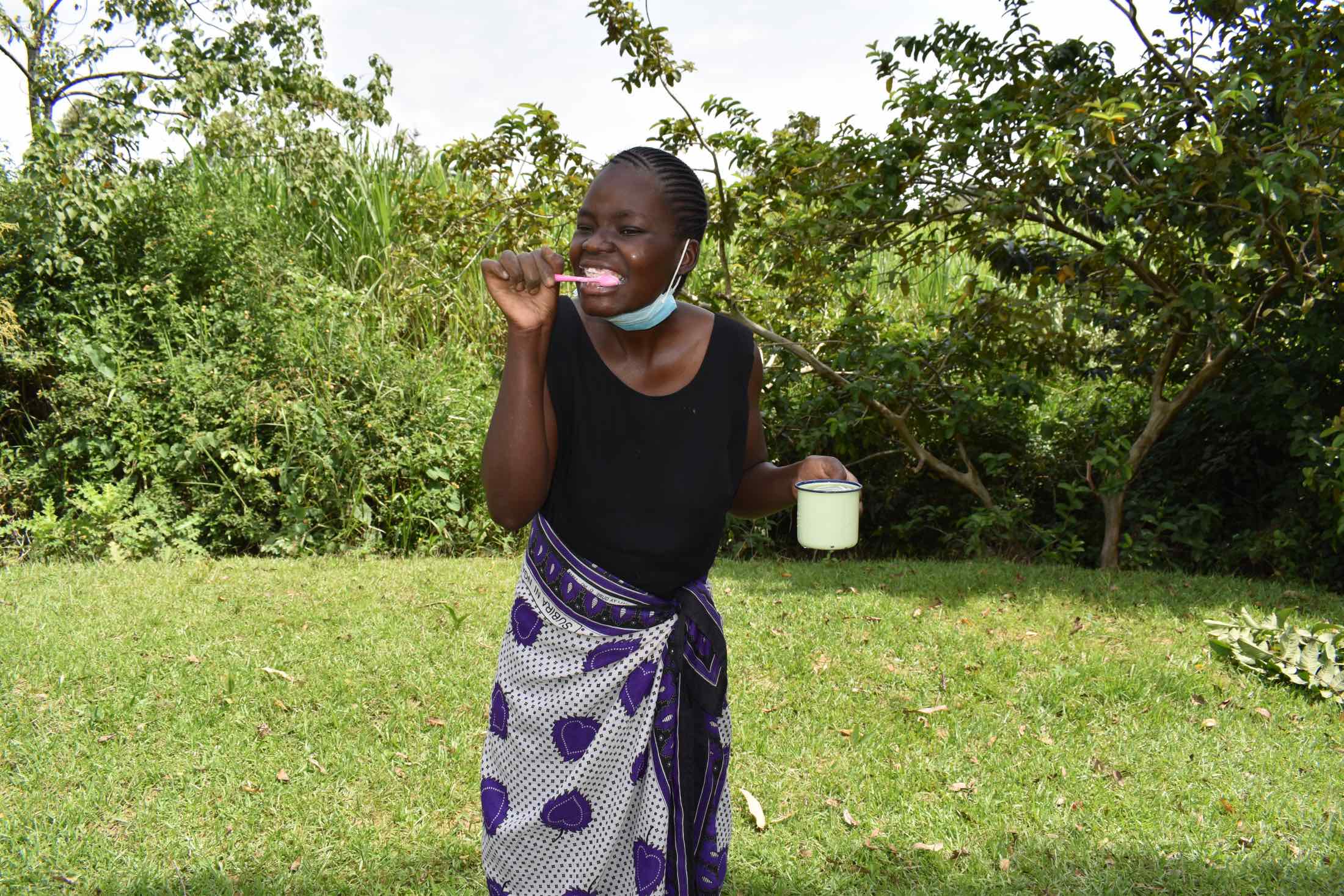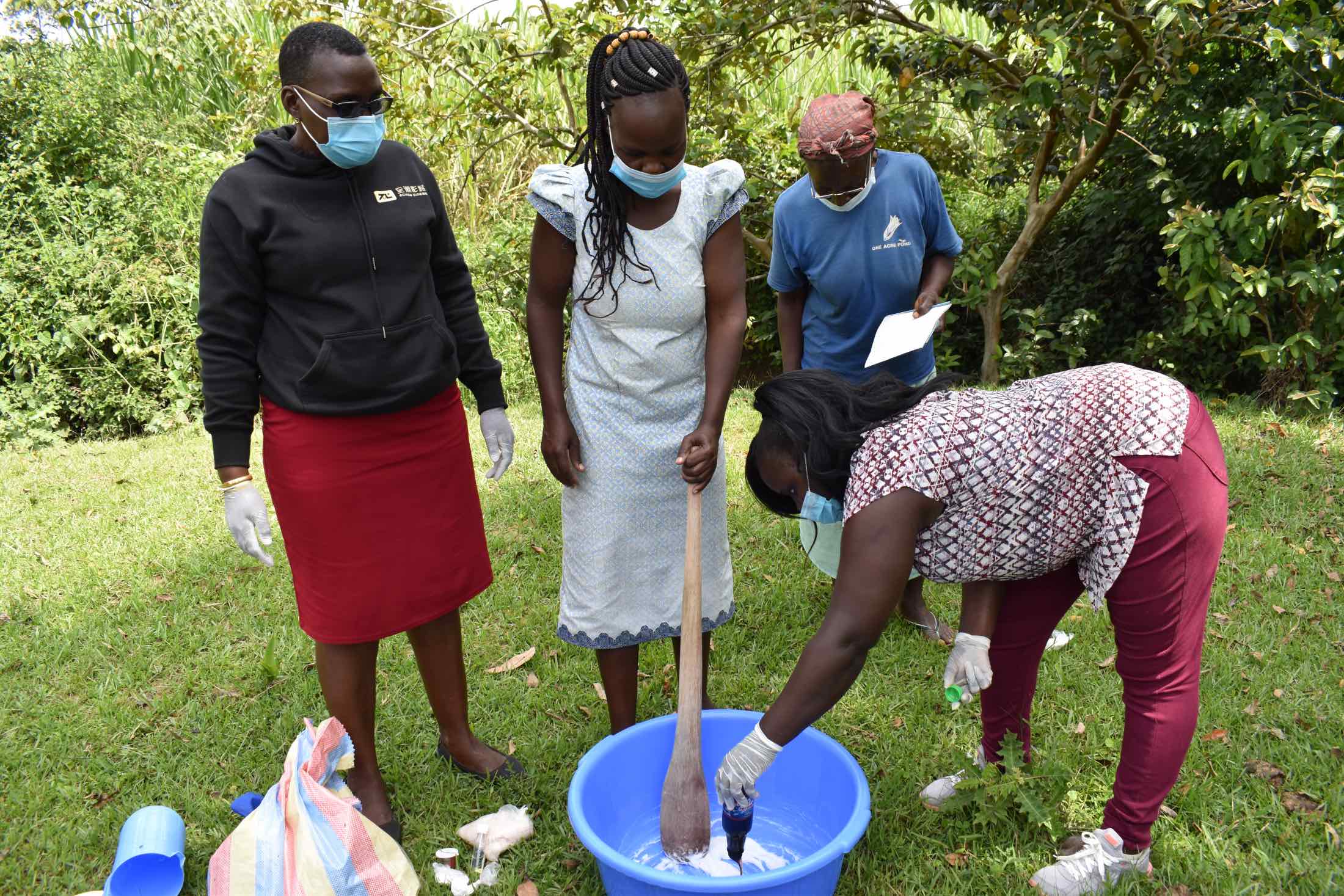"I am a child from this community, and the issues that I have been experiencing from this water point are really making my soul not happy to stay in this community. The poor health state is really a big problem that contributes to poor performance in school. As a pupil, I lack proper sanitation facilities [at home]. The spring has also wasted time and contributed to absenteeism among pupils as a result of collecting water due to overcrowding during the morning hours and evening. This is caused by the lack of a pipe to access water. Lastly, it's because of the waterborne infections which also affects our own parents in terms of financial constraints as the little money they have is being used on medication."
Teenager Chrisiston, quoted above, is very concerned for his future and that of the rest of his community due to their reliance on the dirty water from Reuben Endeche Spring. In the Luyeshe North Community, 330 people depend on this spring as their main water source, but they are consuming contaminated water.
"Water is life, and personally it has taken time to accept that I am using this source. One reason is that I lack alternative ways of acquiring safe water for consumption. This affects my family as we dig in our pockets to cater to medication and being the fact I am the breadwinner, it becomes a challenge in supporting my family," said 46-year-old farmer and father Soita Lukoye.
The spring was once partially protected but it was not done to standard and it quickly fell apart. Today, remnants of old concrete and stonework remain, but water escapes down the entire face of the access point. Plants have totally encroached on the spring, covering where people must press a small jug up against the wall to collect water, then pour that into their larger jerrycan. Below, the ground is a constant pool of water, mud, and slippery rocks which community members try to stand on to avoid the pooled water. Sometimes, they slip into the water anyway.
Because the spring was not fully protected and water now runs down the open wall, the water is highly contaminated. The primary pollutants include farm chemicals, animal waste, and soil that mix with the spring water as runoff seeps into the ground. Additionally, sometimes the vines growing down the spring dip into people's jugs as they press them against the wall. Animal waste was visibly scattered around the water source at the time of our visit, and the water coming from the spring gave off a bad odor.
It is clear enough that the water from Reuben Endeche Spring is not safe for either consumption or domestic use in chores like washing dishes or watering animals, but there is no other water source nearby. Community members reported a high rate of water-related illnesses among families who depend on this spring, especially among children and the elderly. Malaria is also common due to the stagnant water at the spring which serves as an excellent breeding ground for the mosquitoes that carry the disease. Even skin rashes have been reported, which is why some people forego daily baths with this water - and as a result among students, prevents them from attending school due to their poor state of personal hygiene, as Chrisiston mentioned.
What We Can Do:
Spring Protection
Protecting the spring will help provide access to cleaner and safer water and reduce the time people have to spend to fetch it. Construction will keep surface runoff and other contaminants out of the water. With the community’s high involvement in the process, there should be a good sense of responsibility and ownership for the new clean water source.
Fetching water is a task predominantly carried out by women and young girls. Protecting the spring and offering training and support will, therefore, help empower the female members of the community by freeing up more of their time and energy to engage and invest in income-generating activities and their education.
Training on Health, Hygiene, COVID-19, and More
To hold trainings during the pandemic, we work closely with both community leaders and the local government to approve small groups to attend training. We ask community leaders to invite a select yet representative group of people to attend training who will then act as ambassadors to the rest of the community to share what they learn. We also communicate our expectations of physical distancing and wearing masks for all who choose to attend.
The training will focus on improved hygiene, health, and sanitation habits in this community. We will also have a dedicated session on COVID-19 symptoms, transmission routes, and prevention best practices.
With the community’s input, we will identify key leverage points where they can alter their practices at the personal, household, and community levels to affect change. This training will help to ensure participants have the knowledge they need about healthy practices and their importance to make the most of their water point as soon as water is flowing.
Our team of facilitators will use a variety of methods to train community members. Some of these methods include participatory hygiene and sanitation transformation, asset-based community development, group discussions, handouts, and demonstrations at the spring.
One of the most important issues we plan to cover is the handling, storage, and treatment of water. Having a clean water source will be extremely helpful, but it is useless if water gets contaminated by the time it is consumed. We and the community strongly believe that all of these components will work together to improve living standards here, which will help to unlock the potential for these community members to live better, healthier lives.
We will then conduct a small series of follow-up trainings before transitioning to our regularly scheduled support visits throughout the year.
Training will result in the formation of a water user committee, elected by their peers, that will oversee the operations and maintenance of the spring. The committee will enforce proper behavior around the spring and delegate tasks that will help preserve the site, such as building a fence and digging proper drainage channels. The fence will keep out destructive animals and unwanted waste, and the drainage will keep the area’s mosquito population at a minimum.

 Protected Spring
Protected Spring
 Rehabilitation Project
Rehabilitation Project




































